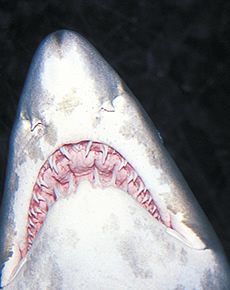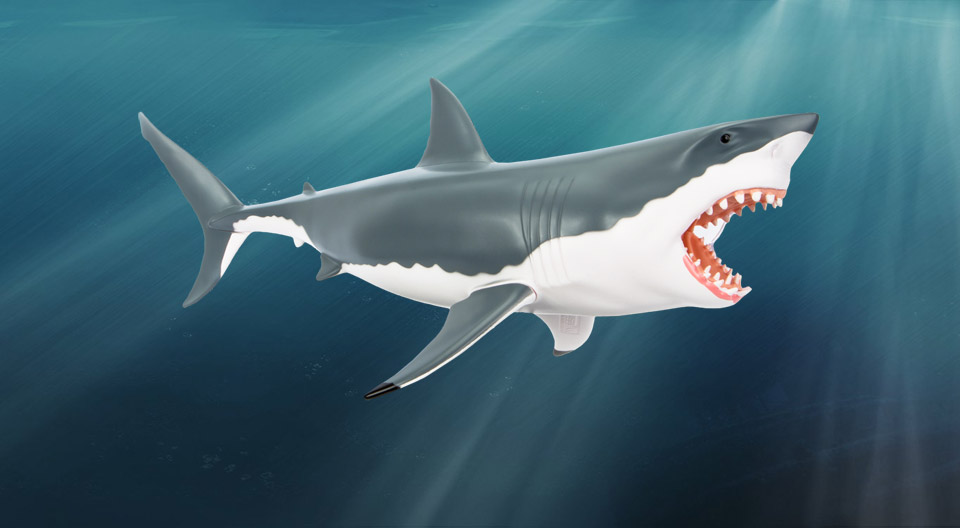

The goal of the study was to explore the potential relationship between band pair formation, vertebral structure and body shape, and not just age. Small, medium and large specimens of seven shark species were examined and included shortfin mako, white, porbeagle, dusky, blue, common thresher, and Atlantic angel sharks. Study co-author Marianne Porter of Florida Atlantic University is further studying the biomechanics of the vertebra of these species in relation to position along the vertebral column and band pair changes. "This study suggests the alternating band pairs are related to structural aspects of the vertebra and are essential for physical support and flexibility of the individual animal rather than deposited in response to an external cue." "What drives the band pair deposition remains unclear but it appears to be related to actions of the vertebral column, possibly based on body and swimming type of the species and the spring action required of the vertebral column for movement," Natanson said. "We found that the band pairs increase relative to the growth in body length and girth over an individual animal's lifespan."

"Vertebral bands serve an important structural and functional role in sharks," said Lisa Natanson, a shark researcher in the Apex Predators Program at the Northeast Fisheries Science Center's Narragansett Laboratory and lead author of the study. The findings, reported in Marine and Freshwater Research, have implications for accurately assessing ages for fisheries management of these species. As growth rate decreases with age, band pair deposition decreases, leading to age underestimation based on band pair counts.

Band pair counts are related to vertebral size, rather than to time or age, and counts vary among vertebrae along the spinal column. Researchers report that band pair deposition is closely linked to growth, specifically to the animal's girth or body width. This new study explored the relationship of band pair deposition to growth rather than time, explaining this discrepancy. Many of these studies have shown age underestimation in older sharks. Some studies using chemical marking, such as Oxytetracycline (OTC), in combination with tag-recapture, and bomb radiocarbon dating have shown that this is often only true for a portion of the life of some species. In the past, band pairs have most often been assumed to be annual. None of the many studies conducted over the past 35 years had completely validated any shark species through an entire lifespan. Determining the periodicity of the formation of these band pairs has been a challenge. Band pairs appear as alternating opaque and translucent bands, similar in concept to those in tree growth rings. The most widely used method counts growth band pairs laid down in individual vertebrae of the shark's backbone.


 0 kommentar(er)
0 kommentar(er)
